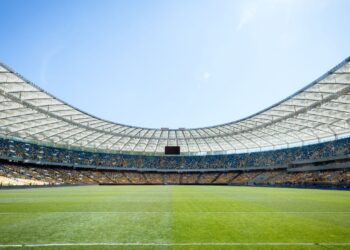Being a multi-sport athlete is a challenge as well as an opportunity in the current world of athletics. The fact that one has to participate in multiple sports throughout the year is not a matter of talent but of intelligent training, flexibility, and commitment. In basketball courts and ski slopes, athletes have to be in optimal physical shape all year round. The information on the effectiveness of multi-sport athletes in their fitness management, would be helpful to both the potential athletes & the amateur players who desire to lead a healthier life.
The Importance of Year-Round Fitness for Multi-Sport Athletes
There are special issues among those athletes who play sports in a number of varieties. The strength, stamina, flexibility, and mind concentration is required to alter sporting activities like tennis, basketball and skiing. The multi-sport athletes have to learn to live to an extensive fitness program that can support a broad scope of performance moves as compared to the single-sport athletes who are able to train to a particular set of movements.
Fitness throughout the year helps to avoid injuries and improve performance. Complementary sports activities also assist athletes in keeping the heart healthy, in maintaining the balance of the muscles, as well as coordination. An example of this is the basketball strength and agility in summer that directly correlate with the movements in the ski slopes in winter. On the other hand, skiing may also enhance the endurance of lower body, balance, and strengthening core which increases court performance.
Cross-Training: The Secret Weapon
Multi-sport athleticism is based on cross-training. Through fitness and sports activities, the athletes enhance physical fitness besides minimizing the chances of overuse injuries. Swimming and cycling can also be part of the routine that a basketball player performs to build the cardiovascular endurance without putting undue stress on the joints. Tennis players can use yoga as a way to become flexible and more focused on their minds.
Strength training is also a crucial factor. Multi-sport athletes aim at functional exercise replicating movements in their sports activities. Lunges, squats, and core stability exercises are used to tighten the muscles which are important in ski equipment, running and jumping. Developing balanced strength, athletes remain agile and powerful in explosive force so that they can do well during any season of the year.
Seasonal Transitions and Sport-Specific Training
Training needs to be adjusted to training seasons. Off-season of one sport gives athletes the opportunity to indulge in other activities that equip them with the next challenge. In the case of winter sports off-season training usually involves plyometrics, resistance training, and aerobic exercise in order to train the body to be ready to ski or snowboard.
At the onset of winter, athletes make the move to the slopes and therefore change their routines with more focus on balance, leg strength, and endurance. Skiers need to adjust to various surfaces and this needs flexibility and precision. Other sporting backgrounds will make sure that the body will be able to perform highly impacting movements on snow without feeling exhausted or hurt.
Ski Equipment and Performance
One of the factors of success in winter sports is the correct ski equipment. Quality equipment would enhance the performance in addition to reducing the possibilities of injury. When skis, boots and poles are appropriately fitted, they will have stability, balance and go over different terrains efficiently. Multi-sport participants realize that depending on the level of skills and physical conditioning, it is essential to fit the equipment to these aspects, and it is as essential as the training during the off-season.
It can make a difference to invest in modern ski technology. The lighter skis are better at the agility side and the adjustable boots and binding give the skis better control. In the case of athletes who switch the sports on the court or field to the skiing one, it is good to get acquainted with the ski equipment which will guarantee confidence and a comfortable skiing experience.
Nutrition and Recovery
The sporting activity during the year will require sophisticated nutrition and rest practices. The multi-sport diets of the sports people are composed of balanced diets of protein, carbohydrates and healthy fats to give energy required to train and compete. They are also expected to be moisturized especially during the court sitting when the sessions are strenuous or when they are skiing at the high altitudes.
The recovery methods, which include; stretching, foam rolling, and getting enough sleep are very important in avoiding fatigue and injuries. Sportspeople tend to incorporate active recovery training such as swimming or light cycling that encourage the circulation of blood and muscle regeneration. The reason being, a systematic recovery program will guarantee year round consistent performance regardless of the sport or season.
Mental Toughness and Adaptability
To be a successful athlete is not only physical but mental strength is essential. Athletes in many sports have to learn a new set of rules, setting, and obstacles on a regular basis. Mental toughness develops in them enabling them to focus, deal with setbacks and even cause them to perform under pressure in various sports.
The visualization methods, mindfulness, and goal setting assist athletes in being motivated. It takes patience and concentration to go off the fast-paced basketball games into the peaceful but challenging ski slopes. Individuals who develop adaptation can easily switch between sports without deteriorating the quality of their performance.
Leveraging Expert Resources
To achieve professional help, athletes should collaborate with professionals. Organizations that are reputable such as High Country Ski & Tennis naturally provide resources, coaching, and equipment guidance to help multi-sport athletes maximize performance throughout the year. Professional advice grants athletes training in a secure manner, choosing the appropriate equipment, and being in the finest shape to engage in every sport.
Conclusion
Being a multi-sport athlete means maintaining fitness which would entail a comprehensive measure of training, diet, rest, concentration (mental) and proper gears. Through cross-training, seasonal demands, and the use of the expertise, the athletes will be able to remain at the top of their ability on both the court and slope. Using the appropriate strategies,, commitment & training gear, multi-sport athletes not only dominate in each of the disciplines but also have the advantages of being fit and strong all year round.








